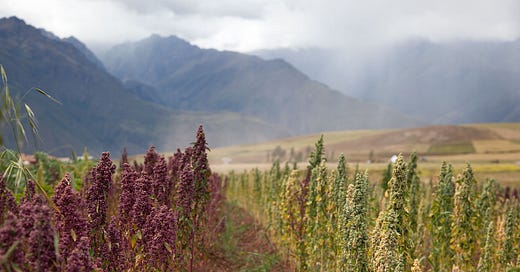How to Buy Quinoa That Supports Andean Farmers
Most brands aren't transparent so consumers need to do their own research.
Around 2005, quinoa went global and the entire market around it changed. It started being marketed as a health food at a m moment when being kosher, gluten-free and a complete plant protein were highly sought after attributes. Supply could not keep up with demand, so, naturally, prices jumped and much m…
Keep reading with a 7-day free trial
Subscribe to New Worlder to keep reading this post and get 7 days of free access to the full post archives.




